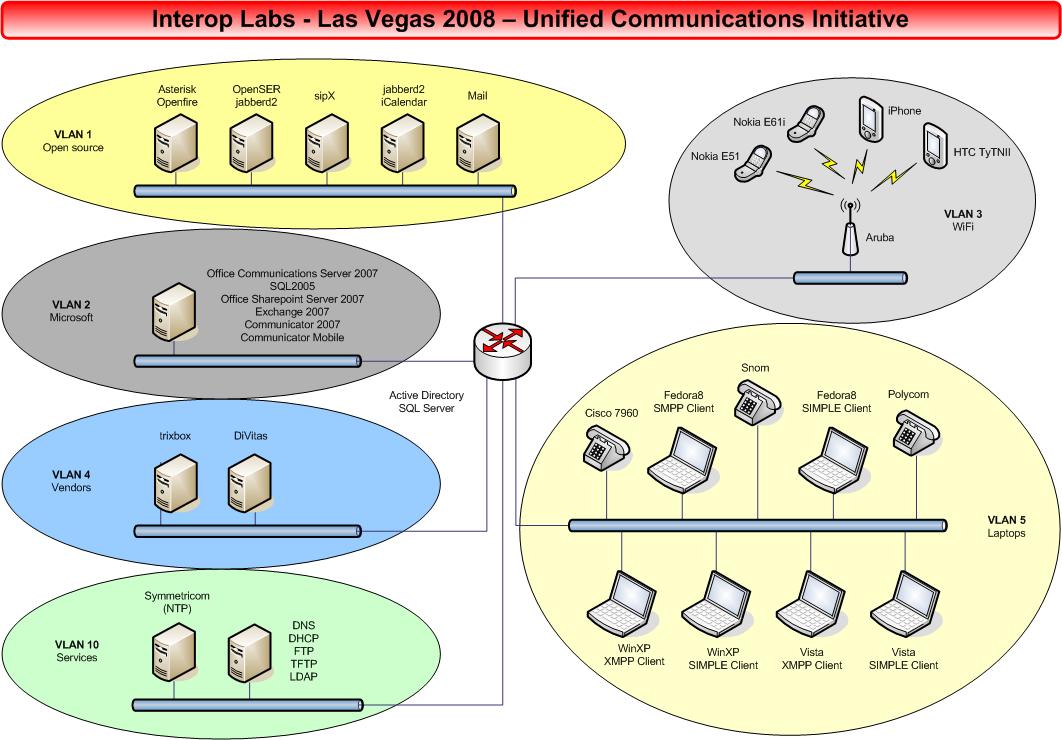
Unified Communications (UC) is a commonly used term for the integration of disparate communications systems, media, devices and applications. This potentially includes the integration of fixed and mobile voice, e-mail, instant messaging, presence, Internet Protocol (IP)-PBX, Voice over IP (VoIP), Voice over Wireless LAN (VoWLAN), voice mail, fax, audio, video and web conferencing, unified messaging, unified voicemail into a single environment.
Various parts of the industry and various vendors tend to define the concept of UC in slightly different ways, but it can really involve any means of presenting availability information, collaborating and communicating. The applications range from calendar and email, via desktop-sharing, instant messaging and PDAs, to voice applications with handsets, softphones and mobile phones, voicemail and video conferencing, all of these with a central system that keeps track of the presence information for the different users and different applications, devices and protocols.
UC is currently more of a loosely defined concept and less of a framework with a defined set of protocols. There are numerous proprietary protocols and a few more or less standardized ones. Session Initiation Protocol (SIP) with its extensions in SIMPLE, is a likely candidate to unite many of the UC applications, but SIP currently only fills the basic need and most vendors have written their own extensions to the protocol, making interoperability challenging and often limited.
Implementing a complete UC system is not trivial, however, with an increasingly mobile workforce, and de-centralized businesses, the need for a wider range of, and a more accessible layer to the different communications options available to the end user is increasing. The InteropLabs Unified Communications Initiative will investigate the areas most commonly included in the concept of UC, how they integrate and the protocols involved. We will look at both single-vendor and multi-vendor solutions and endeavor to address some of the challenges involved in implementing a seamlessly integrated system of different communication mechanisms as a system of Unified Communications.

UC Lab Background and Design Concepts
Additional whatepapers will be available after Friday May 10th 2008 at UC Lab Whitepapers
RFC 3920 XMPP Core Specification
RFC 3921 XMPP IM Specification
RFC 3922 XMPP CPIM Specification
RFC 3923 XMPP E2E Specification
RFC 4854 XMPP URN Specification
RFC 4979 XMPP ENUM Specification
RFC 5122 XMPP URI Specification
RFC 3856 A Presence Event Package for the Session Initiation Protocol (SIP)
RFC 3857 A Watcher Information Event Template-Package for the Session Initiation Protocol (SIP)
RFC 3858 An Extensible Markup Language (XML) Based Format for Watcher Information
RFC 3944 Indication of Message Composition for Instant Messaging
RFC 4479 A Data Model for Presence
RFC 4482 CIPID: Contact Information for the Presence Information Data Format
RFC 4480 RPID: Rich Presence Extensions to the Presence Information Data Format (PIDF)
RFC 4662 A Session Initiation Protocol (SIP) Event Notification Extension for Resource Lists
RFC 4661 An Extensible Markup Language (XML) Based Format for Event Notification Filtering
RFC 4660 Functional Description of Event Notification Filtering
RFC 4826 Extensible Markup Language (XML) Formats for Representing Resource Lists
RFC 4825 The Extensible Markup Language (XML) Configuration Access Protocol
RFC 4976 Relay Extensions for the Message Sessions Relay Protocol (MSRP)
RFC 4975 The Message Session Relay Protocol (MSRP)
RFC 5025 Presence Authorization Rules
Network World Unified Communication Homepage
UBM/Techweb No Jitter - Unified Communication Homepage